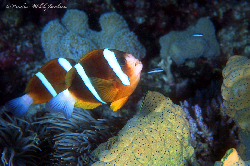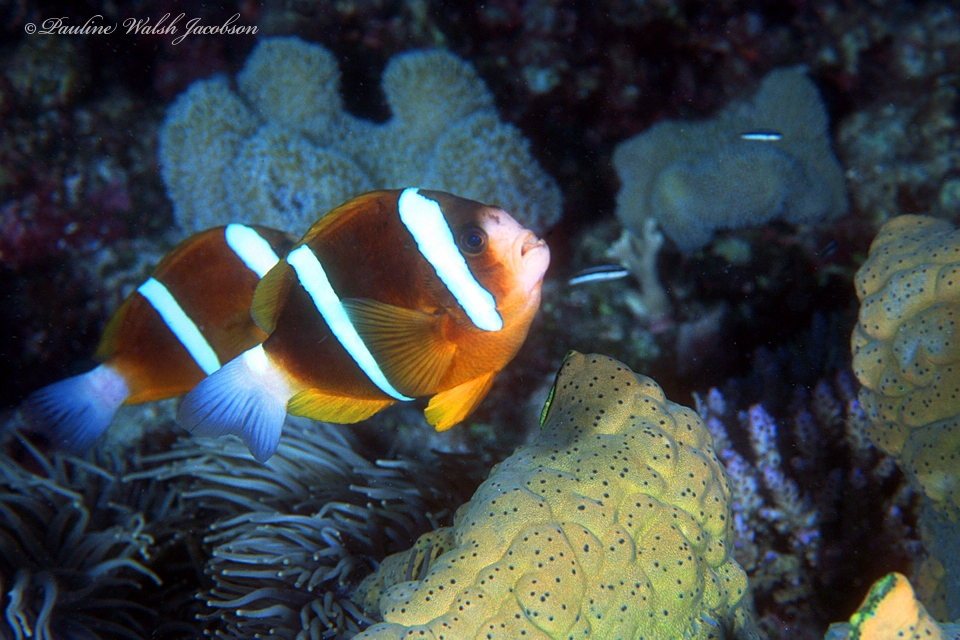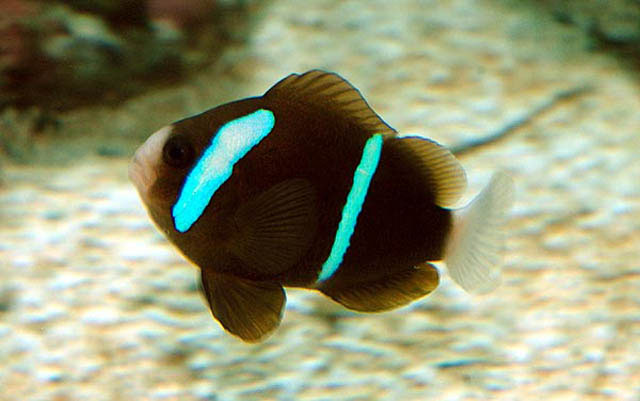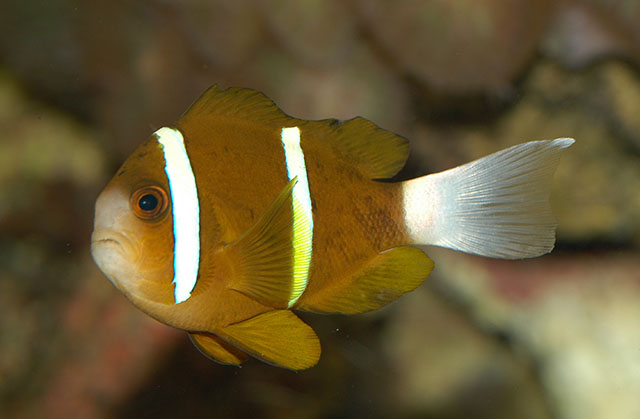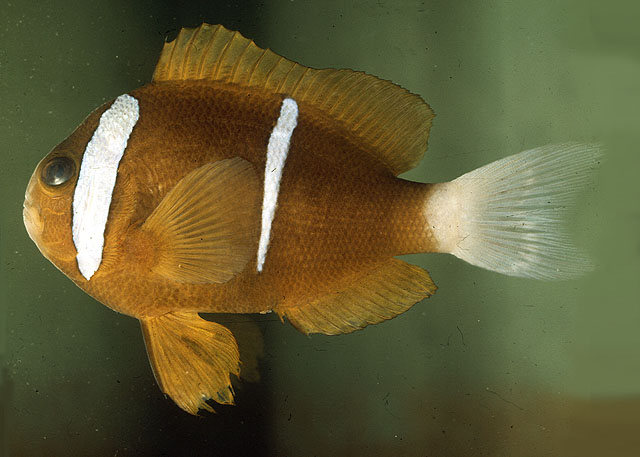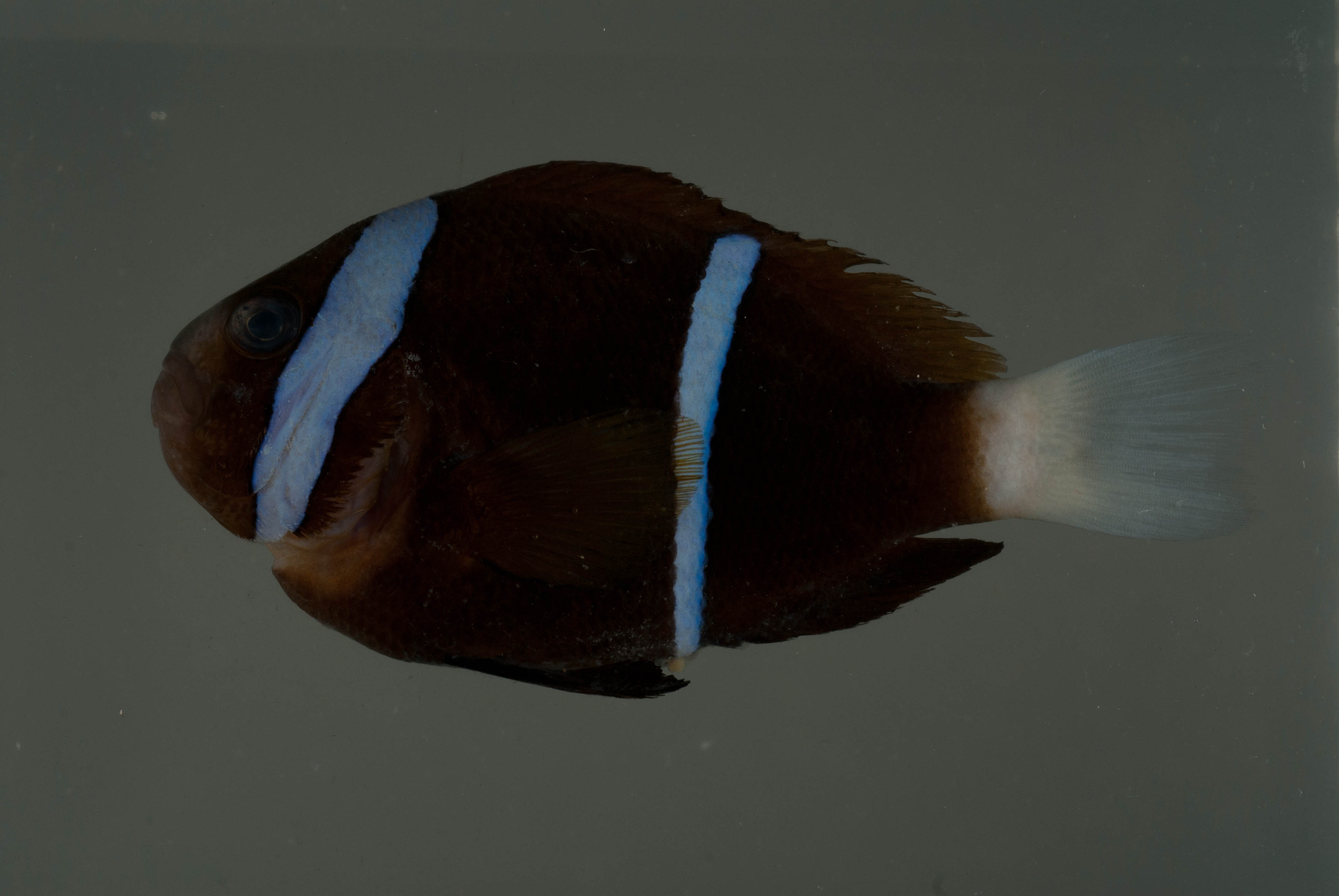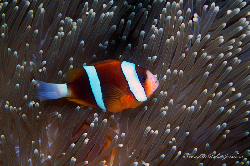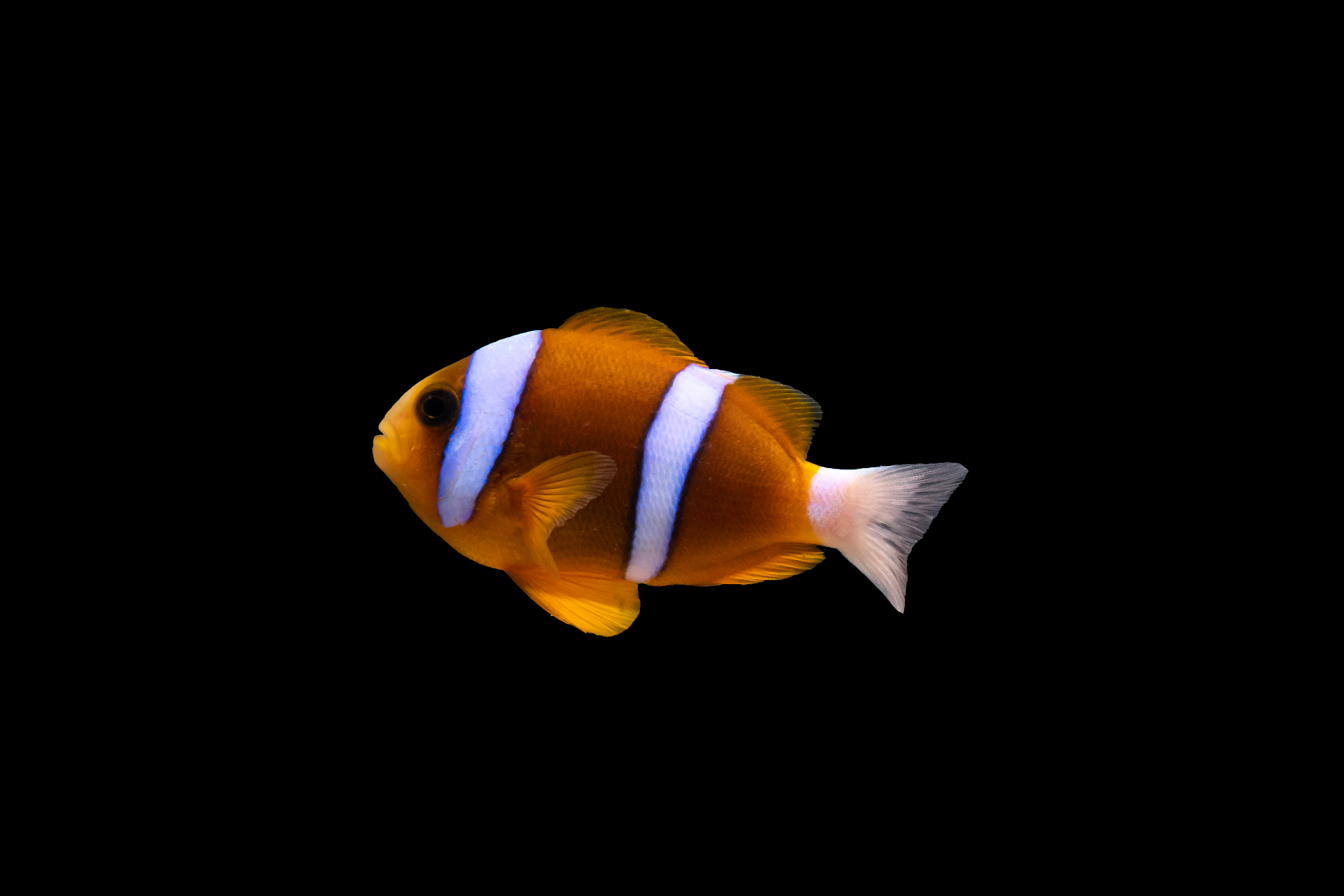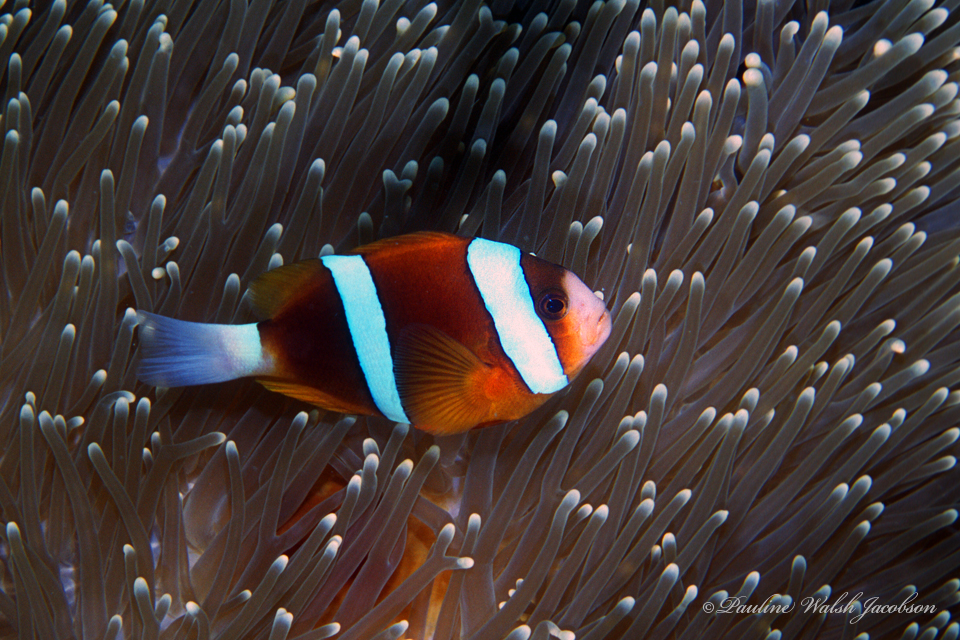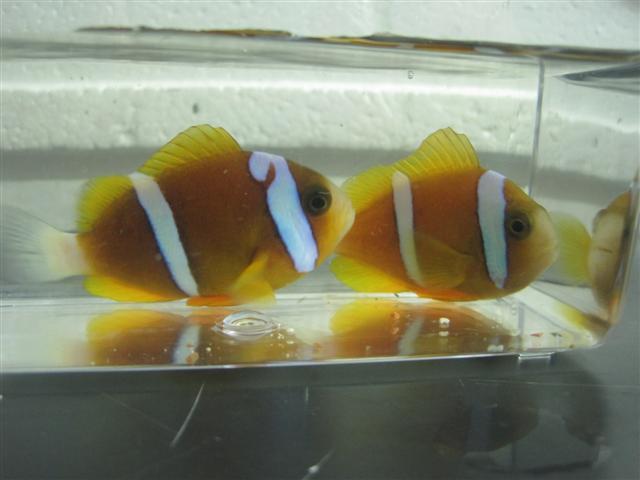Amphiprion akindynos Allen, 1972
Description
Dorsal spines (total): 10 - 11; Dorsal soft rays (total): 14 - 17; Anal spines: 2; Anal soft rays: 13 - 14. Body and head orange with two black-edged white bars; the first running from the top of the head across the face, just behind the eye; the second from the mid portion of the dorsal fin. Caudal peduncle and caudal fin white.
Common Names
Taxonomic Hierarchy
Kingdom: Animalia
Phylum: Chordata
Class: Teleostei
Order: Ovalentaria/misc
Family: Pomacentridae
Genus: Amphiprion
Species: Amphiprion akindynos Allen, 1972
Climate Zone
Location
Biology
Adults occur in lagoon and outer reefs (Ref. 2334). Oviparous, distinct pairing during breeding (Ref. 205). Eggs are demersal and adhere to the substrate (Ref. 205). Males guard and aerate the eggs (Ref. 205). Associated with the anemones: Entacmaea quadricolor, Heteractis aurora, Heteractis crispa, Heteractis magnifica, Stichodactyla haddoni, and Stichodactyla mertensii (Ref. 5911). Has been reared in captivity (Ref. 35407).
Habitat
associated
